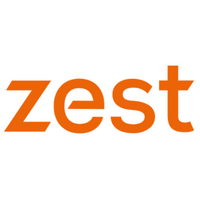How wellbeing benefits can help businesses win the race for talent
The past few years have been challenging for many businesses. Covid-19, soaring bills and rising wages have all contributed to a significant cost of doing business crisis, which has no doubt kept many leaders awake at night.
So, many firms will have been delighted to see recent research from Adzuna revealing that vacancies are filling at the fastest pace in seven years, with roles advertised on job boards for an average of just 37 days over the last year compared with 44 days previously.
Maybe this is a sign that businesses are set for a period of less financial pressure.
However, these figures also shed light on a different issue that many businesses face – how to ensure it stands out from the crowd in a hugely competitive talent market without injecting huge financial resources into simply raising salaries.
Higher pay is not a panacea
Of course, competitive pay is vital, but a race to offer the highest wages on the market is not only unsustainable, it’s also unlikely to help long-term employee retention. After all, there is always going to be another company looking to offer a higher basic salary.
Continually hiking salaries over the long-term can have a huge impact on growth and profitability while also requiring significant senior resources and a high risk of losing vital talent. Businesses, therefore, need to understand the shifting priorities of workers in areas like wellbeing if they’re going to meet growth plans and flourish.
Forward-thinking employers have long known that total renumeration goes beyond an employee’s monthly pay packet.
Personalised benefits packages can help employers stand out among the competition and boost the overall employee experience. For example, more employers are considering wellbeing as an increasingly critical element of a benefits package and are implementing this in an array of different ways, from provision for mindfulness sessions to yoga classes and a offering mental health days.
Tailored and flexible benefits
A flexible package that includes these types of benefits and tailored to a workforce’s needs, which could also include modern, progressive benefits like menopause support, financial education tools or a work-from-home allowance, is hugely valuable for an employee.
And given that there are reports that workplace stress levels are the highest they’ve ever been, the need for this type of support from employers is more crucial than ever. Despite this, the challenge has often been in ensuring that employees see this too and understanding what needs to be done.
As employee benefits become more varied and tailored, businesses are turning their attention to how to make employees aware of the full value of their packages. This is most clearly seen in the increasing numbers of businesses introducing Total Reward Statements (TRS) – a simple and effective tool of highlighting exactly what an employee is worth and the total value of their benefits package.
Though a business may have a great benefits package to support areas like wellbeing, it can often sit underused, offering poor value for money to both employer and employee. Offering a TRS can be a great way to solve this issue, presenting employees with their benefits in a clear and simple form.
However, offering personalised benefits packages is only possible and effective if employers are able to accurately track the benefit take-up and communicate with their workforce to truly understand their needs.
Data tools
Fortunately, businesses have a wide array of data and analytical tools at their disposal to not only understand the needs of their workforce when it comes to benefits packages, but also to leverage these insights to improve take-up.
Often, however, there are frustrating gaps in this data, with some platforms unable to track metrics such as take-up or provide insight into specific teams or across certain demographics in the workforce.
Employers need to ensure that they have access to the most accurate tools which offer improved segmentation and greater insights, ensuring they are more informed of employee needs and better placed to engage with their workforce on their requirements. This can be the difference in boosting take-up, value for money and employer experience simultaneously.
In many businesses, tried and tested methods such as HR workshops to boost awareness and understanding of the benefits available remain integral. This approach remains effective for smaller businesses and on a team level. But, to get an organisation-wide view in larger companies, leveraging data insights into take-up is the best option.
Businesses who can get this right are much more likely to offer a truly compelling overall benefits package. As employee priorities shift away from being primarily motivated by things like salary, those who recognise and act on the growing desire from workers for an employer that recognises the importance of areas like wellbeing can elevate themselves from the competition as the race for talent hots up.
Supplied by REBA Associate Member, Zest
Zest is the next generation platform that’s reinventing the world of employee benefits.








